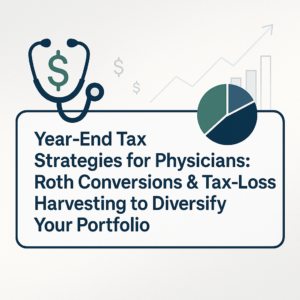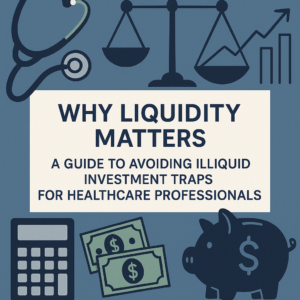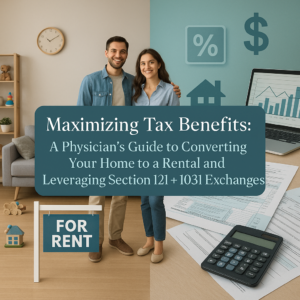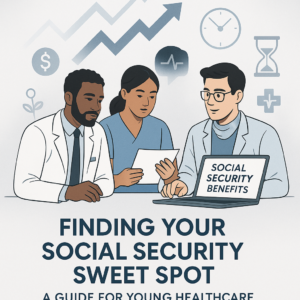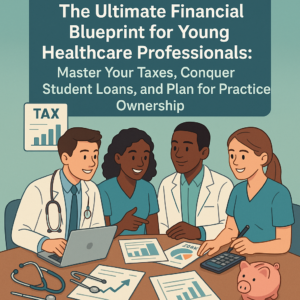Maximizing Tax Benefits: A Physician’s Guide to Converting Your Home to a Rental and Leveraging Section 121 + 1031 Exchanges
As a busy physician, dentist, or healthcare professional, you dedicate countless hours to patient care. Yet, your personal finances—especially your home—can also work harder for you. By strategically converting your primary residence into a rental property, you can unlock powerful tax advantages: the Section 121 capital gains exclusion and the 1031 like-kind exchange. This combined approach may help you exclude a large portion of your gain from tax and defer the remainder to another investment property. In this comprehensive guide, we’ll walk through each step, timeline, and requirement—simplified for busy doctors—so you can confidently pursue this wealth-building strategy.
Why Convert Your Home to a Rental Property?
Before diving into the technical rules, let’s consider the “why.” Rental real estate can provide:
- Consistent passive income that supplements your practice earnings.
- Additional depreciation deductions to offset taxable income.
- Opportunity to diversify your investment portfolio away from cash and equities.
- Long-term capital appreciation in growing real estate markets.
By timing the sale correctly and employing the Section 121 exclusion alongside a 1031 exchange, you can keep more of your profits working for you in the real estate you truly want to hold.
The Building Blocks: Section 121 Exclusion & 1031 Exchange Explained
Section 121 Capital Gains Exclusion
Under IRC Section 121, when you sell your primary residence, you may exclude up to:
- $250,000 of capital gain if filing single.
- $500,000 of capital gain if married filing jointly.
To qualify, you must have owned and used the home as your primary residence for at least two of the five years immediately preceding the sale.
Section 1031 Like-Kind Exchange
A 1031 exchange allows you to defer capital gains taxes by reinvesting proceeds from a rental (or investment) property sale into another “like-kind” property. Key points:
- The replacement property must be identified within 45 days of sale.
- Closing on the replacement property must occur within 180 days.
- Both relinquished and replacement properties must be held for investment or business use.
This deferral continues until you dispose of the replacement property without another exchange or trigger depreciation recapture.
Who Should Consider This Strategy?
This plan is particularly well-suited for:
- Physicians, dentists, and specialists with high marginal tax rates seeking capital gains relief.
- Young healthcare professionals looking to build a rental property portfolio.
- Medical practitioners planning to move for a new position or retirement.
- Those comfortable managing a rental or willing to engage a property manager.
If you expect significant appreciation in your current home, this dual approach can help preserve exclusion benefits while extending your deferral horizons.
Step-By-Step Timeline & Eligibility Requirements
1. Meet the Section 121 Ownership & Use Test
You must have owned and lived in the home for at least 2 of the last 5 years prior to sale. These years need not be consecutive. If your move is driven by a new assignment or residency, track your move dates carefully.
2. Convert Primary Residence to Rental
- Begin renting the home—document lease agreements and tenant activity.
- Start treating it as an investment property for bookkeeping.
- Don’t convert more than three years before sale, or you may jeopardize the Section 121 exclusion.
3. Hold as Rental for 1–3 Years
To capture both benefits, most tax planners recommend renting the property for 12–36 months. This window:
- Helps substantiate investment intent for a later 1031 exchange.
- Keeps you within the 3-year look-back for Section 121.
4. Sell & Exclude Gains Under Section 121
At sale, exclude up to $250K/$500K in gain as long as your move-out date is within three years. Document your original purchase price, improvements, and selling expenses to calculate net gain precisely.
5. Deploy a 1031 Exchange for Gains Above Exclusion
Any remaining gain above your exclusion can be deferred via a 1031 exchange. Engage a qualified intermediary before closing to hold proceeds and identify suitable replacement properties within 45 days.
Illustrative Case Study: Dr. Patel’s Transition
Dr. Anita Patel, an orthopedic surgeon, purchased her home for $600,000 in 2016. By 2023, its market value soared to $1,200,000—an unrealized gain of $600,000.
- Dr. Patel lived in the home from 2016–2021 (5 years), then relocated for fellowship.
- She converted the property to a rental in January 2022, leasing it to a young family.
- In December 2023, after 23 months of rental use, she listed the property for sale.
- At closing, she excluded $500,000 of gain (married filing jointly) under Section 121.
- The remaining $100,000 gain was rolled into a 1031 exchange to buy a multi-family property closer to her new practice.
By combining these provisions, Dr. Patel preserved half a million dollars of wealth and deferred taxes on the rest, all while growing her rental portfolio.
Additional Tax Benefits of Rental Ownership
Beyond gain exclusion and deferral, rental ownership offers ongoing tax advantages:
- Depreciation Deductions: Residential rental property depreciates over 27.5 years—reduce taxable rental income each year.
- Operating Expense Write-Offs: Property management fees, repairs, maintenance, insurance, and utilities become deductible business expenses.
- Interest Deduction: Mortgage interest on financing remains deductible against rental income.
Advanced Tactic: Selling to an S Corporation
High-earning physicians sometimes consider selling the converted rental property to a wholly-owned S corporation before the three-year mark. Benefits may include:
- Resetting depreciable basis under corporate ownership.
- Preserving the Section 121 exclusion if structured properly.
- Potential payroll tax efficiencies on rental income distributions.
However, this strategy involves complex entity planning. Always consult a tax advisor familiar with S corporation rules and state real estate regulations.
Deep Dive: Navigating the 1031 Exchange Process
Qualified Intermediary & Documentation
You must use a qualified intermediary (QI) to hold sales proceeds. Never touch the cash yourself—doing so can invalidate the exchange.
45-Day Identification Rule
Within 45 days of your sale’s closing, you must submit a written list of replacement properties to your QI. You can identify:
- Up to 3 properties regardless of value.
- Any number of properties provided their total value does not exceed 200% of the relinquished property’s net sale price.
180-Day Exchange Completion
Your QI must close on one or more of the identified properties within 180 days. Extensions are not available—plan transactions with realistic timelines.
Implementation Checklist for Doctors & Dentists
- Confirm you meet the 2-of-5-year Section 121 residence test.
- Engage a property manager or set up robust recordkeeping for your new rental.
- Select a qualified intermediary for your 1031 exchange—research credentials and reviews.
- Discuss entity considerations (individual vs. S corporation) with your CPA.
- Identify potential replacement properties early—analyze cash flow, cap rate, and location.
- Track all improvement costs and holding expenses for accurate basis calculation.
- Consult a real estate attorney for local landlord-tenant law compliance.
Why Work with Mainstay Capital?
At Mainstay Capital, we specialize in helping healthcare professionals maximize real estate tax strategies. Our collaborative process includes:
- Personalized portfolio analysis.
- Coordination with your CPA, attorney, and qualified intermediary.
- Ongoing asset management support.
- Clear performance reporting and tax-impact projections.
Learn more about Our Process and how we partner with you at every step.
Explore our range of Services tailored for busy physicians and dentists seeking tax-efficient real estate solutions.
Next Steps & Getting Started
Ready to put your home to work? Here’s how to begin:
- Visit our About Us page to learn about our team of CPAs, attorneys, and real estate specialists.
- Schedule a complimentary discovery call to assess your unique situation.
- Collect your home purchase docs, improvement records, and current rental analysis.
- We’ll craft a step-by-step plan to convert, rent, and exchange—maximizing exclusions and deferrals.
Your next chapter of real estate investing starts now. Partner with Mainstay Capital to safeguard your wealth and optimize tax efficiency.
Disclaimer
This blog post is for educational purposes only and does not constitute tax, legal, or investment advice. Always consult with a qualified tax advisor, attorney, or financial professional before implementing any strategies described herein.

